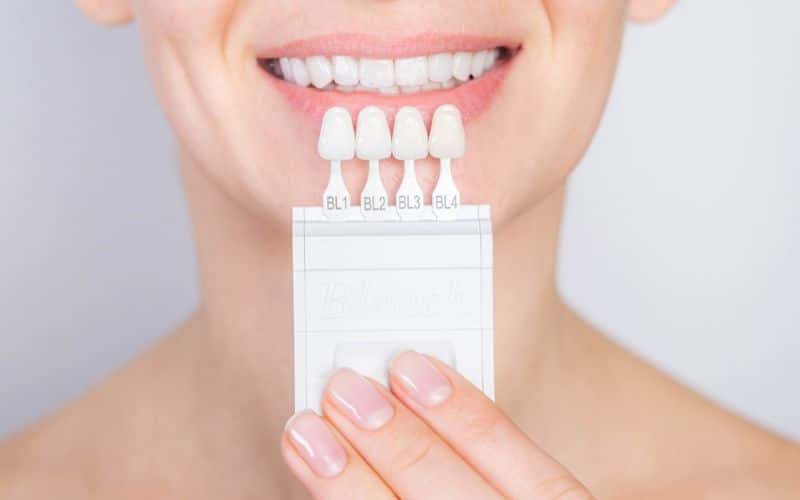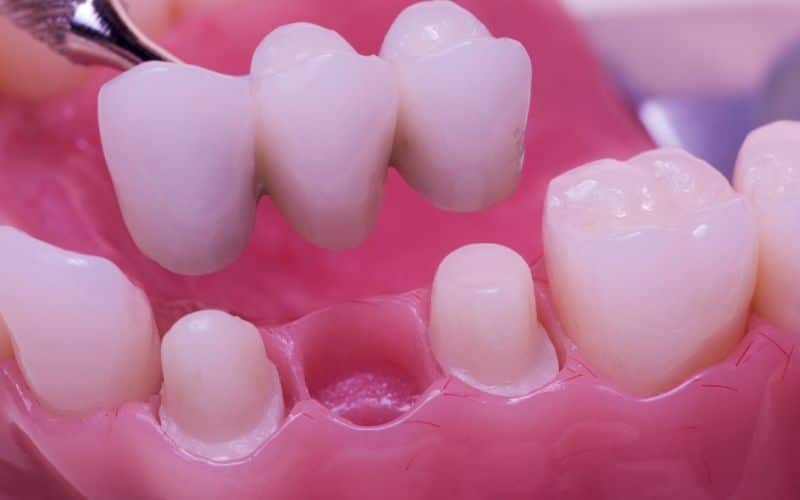Even if you maintain excellent oral hygiene practices and avoid staining foods and drinks, your teeth can lose their bright appearance over time. Fortunately, dentists can help you restore them to their pristine state.
Using bleaching products, dental professionals can lighten your natural tooth enamel to improve the appearance of your smile. However, whitening won’t be effective on any visible restorations such as veneers or crowns.
Teeth Whitening
In general, whitening treatments are only effective on natural tooth enamel. They do not lighten stains that are a result of veneers, crowns or tooth-colored fillings. Your dental team will be able to tell you whether bleaching is a good option for your teeth and can supervise the treatment if it is.
A professional whitening treatment typically involves applying a whitening gel that contains hydrogen peroxide or carbamide peroxide to your teeth and leaving it there for half an hour to an hour. The whitening agent penetrates the porous outer layer of your teeth and breaks apart stain compounds. It is usually followed by a high-intensity light that speeds up the oxidation process.
The procedure can be completed in a single short appointment, or it may take several shorter appointments. Your dentist will start the session by placing a rubber shield or gel on your gums to protect them from the whitening solution.
Some patients will experience minor sensitivity, but this is usually temporary and should subside shortly after the treatment is over. While the procedure is safe, it should only be done under a dentist’s supervision and according to the product instructions. Tooth whitening is an inexpensive and quick way to brighten your smile. Studies have shown that people with beautiful smiles are viewed as more friendly, trustworthy and self-confident than those who don’t have great smiles.
Dental Veneers

Often made of porcelain or composite resin, veneers are like thin shells that cover the front surface of each tooth. They’re customized to fit precisely over the prepared tooth and replicate its natural shape, color and texture. These cosmetic coverings camouflage a range of dental flaws including chips, cracks, discoloration that doesn’t respond to teeth whitening and gaps or spaces between your teeth.
In some cases, a small amount of the tooth may need to be trimmed to ensure the veneer fits properly. Your dentist or dental practitioner may use a local anesthetic during this process to minimize discomfort. This is especially true if the veneer will be bonded to a very small area of a tooth that juts out from your gum line or if it’s located at the rear of your mouth.
When the veneer is bonded in place, your dentist or dental practitioner will remove any excess cement and evaluate its appearance and placement to make sure it’s comfortable and attractive. You’ll be able to eat and drink normally after the anesthetic and numbness wear off, although your jaw and gum tissue may feel tender for several days or more.
Porcelain veneers can last for years if you maintain proper oral hygiene habits. That includes regular brushing and flossing as well as routine dental visits. You should also avoid consuming foods and drinks that can stain teeth, such as red wine or coffee.
Dental Crowns
If you have a broken tooth or a cracked filling, dental crowns will fix the problem and improve your smile’s appearance. However, the procedure cannot whiten teeth that are stained or discolored. If you have these kinds of teeth, your dentist will recommend other cosmetic treatments to brighten them.
The bleaching solution used in whitening treatments is usually a type of hydrogen peroxide. It can be found in a range of branded whitening kits sold at pharmacies and grocery stores. The whitening process takes about an hour to complete. Your dentist will place cheek retractors and rubber dams to protect your gums and then apply the whitening agent over your teeth in 15-minute increments. They will then use a high-intensity light to speed up the treatment.
Teeth whitening is very effective and relatively affordable. Most people achieve several shades of whiter teeth in a single appointment. The results can last for several years if you avoid stain-causing foods and drinks.
Before you opt for a whitening product, consult with your family dentist about the risks of using whitening chemicals and procedures. They can diagnose any underlying problems and help you select the best options for your teeth. They will also ensure that your teeth are healthy enough for whitening. If they are not, your family dentist can treat the issue before attempting a whitening treatment.
Dental Bridges

Dental bridges are a cosmetic and functional solution for missing teeth. They can replace one tooth or multiple consecutive teeth in a row. The bridge literally “bridges” the gap with a combination of metal or porcelain crowns cemented to healthy teeth on either side (called abutments) and a false tooth (or teeth) in the middle.
Before treatment begins, your dentist will perform a consultation to examine the area and determine whether or not a bridge is the best option. Your natural teeth will be prepared on either side of the gap with a local anesthetic, and impressions will be taken to create a model of your mouth. This will allow your dentist to accurately fabricate your restoration for the most precise fit and optimal results.
There are several types of dental bridges that can be fabricated depending on your specific needs. The most common is a traditional bridge that utilizes two crowns that are anchored to the abutment teeth on either side of the gap and a fake tooth that fills in the middle. Cantilever bridges are a less invasive alternative to traditional bridges but can pose some issues with stability.
Regardless of which type of bridge you choose, all dental bridges require a commitment to attentive oral care to promote their longevity. Brushing twice a day, flossing and using antiseptic mouthwash on a daily basis can prevent bacterial buildup from damaging the abutment and supporting teeth. Visiting your dentist or dental hygienist on a regular basis for cleanings can also help detect problems early when they are easier to treat.


